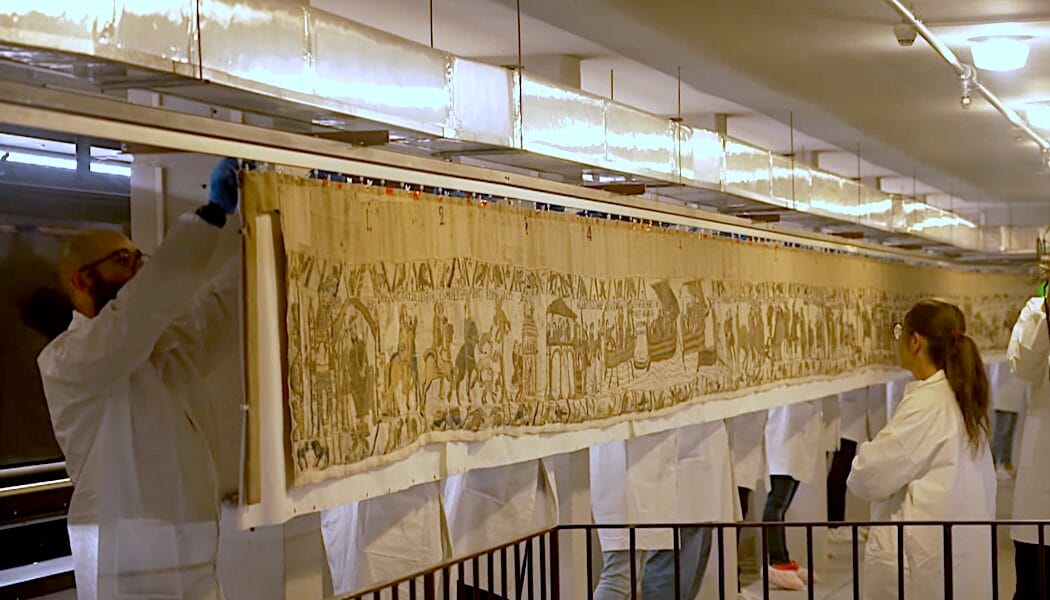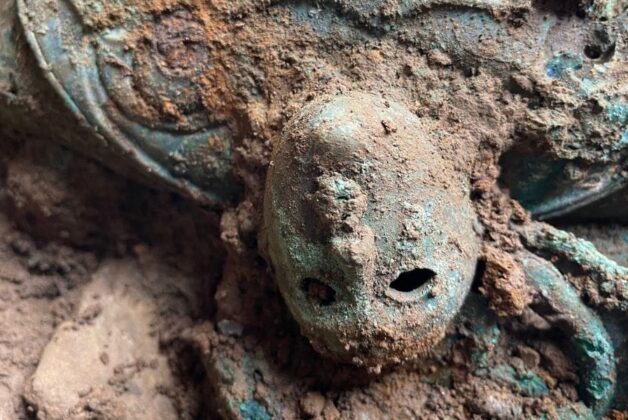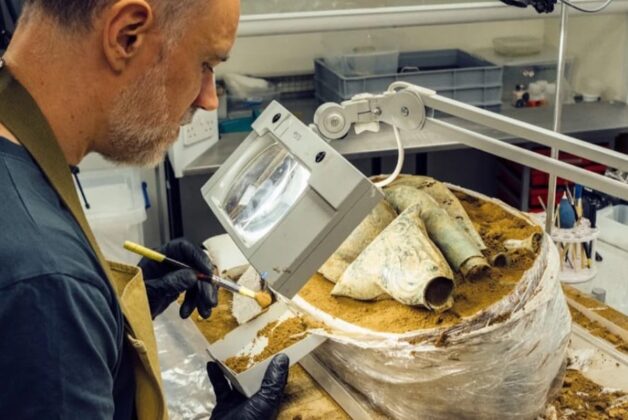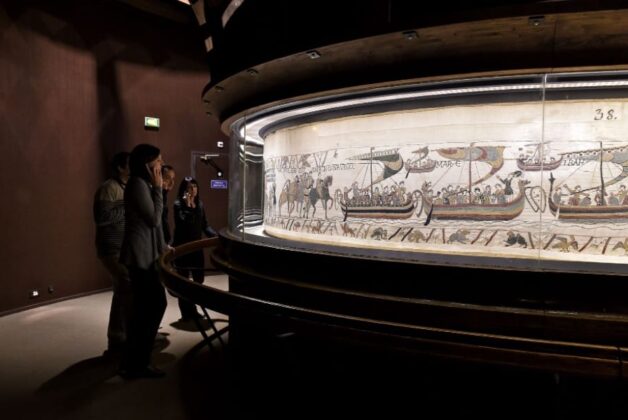Alistair Hardaker
Image: A screenshot from the FANCE 24 video
Footage shows complex seven-hour process involving 100 people to move 68-metre medieval embroidery from Normandy museum
A new look at the Bayeux Tapestry’s relocation from its home at the Musée de Bayeux en Normandie this week reveals the scale and complexity of the operation. Footage shows the intricate process that required 100 people working for seven hours to carefully move the 68-metre medieval embroidery to a secret location ahead of its historic loan to the British Museum in 2026.
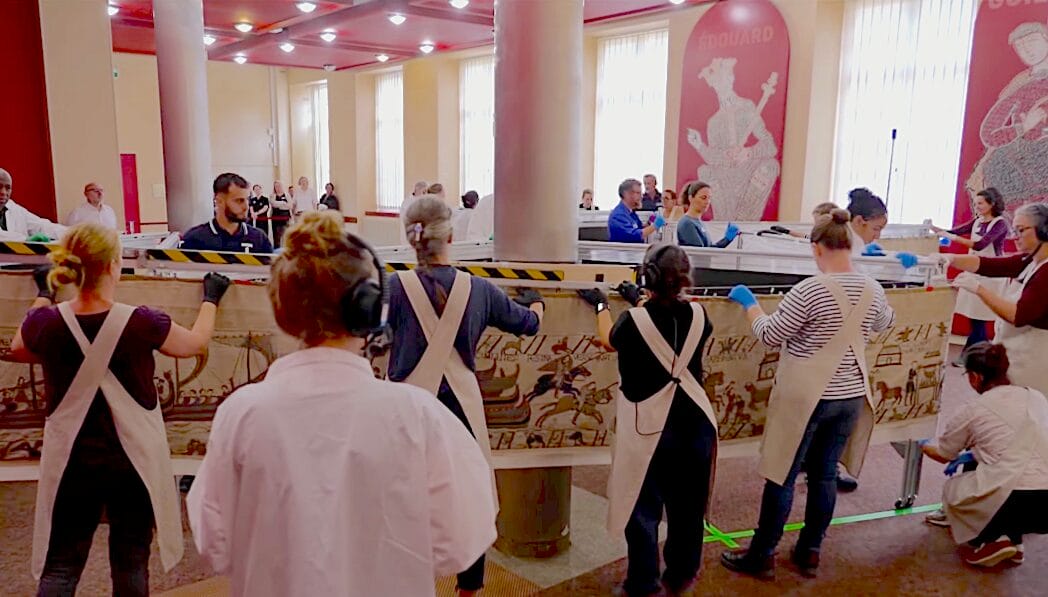
The tapestry has been folded and placed into temporary storage ahead of its journey to London, where it will go on display at the British Museum as part of a cultural exchange announced by the UK government in June. Under the agreement, the Sutton Hoo treasures and Lewis Chessmen will be loaned to France in return.
The move comes despite opposition from those concerned about the tapestry’s fragility. More than 60,000 people have signed a petition opposing the loan to the British Museum, with some conservation experts warn could cause damage to the nearly 1,000-year-old textile.
However, the British Museum has expressed confidence in the planned transfer. The museum’s director Nicholas Cullinan wrote in the Guardian: “experts on both sides of the Channel have been carrying out rigorous planning and due diligence to ensure the safe transport and conservation of the tapestry. Colleagues in France are preparing for its careful removal before work begins on their new museum, and intricate plans are being made for its journey to London.”
The relocation to secure storage represents a significant milestone in the preparation for what will be the tapestry’s first journey outside France since the medieval period. The British Museum display is scheduled for 2026, marking an unprecedented opportunity for UK audiences to view the historic textile that depicts the Norman Conquest of England in 1066.
New view of Bayeux Tapestry move reveals operation scale

